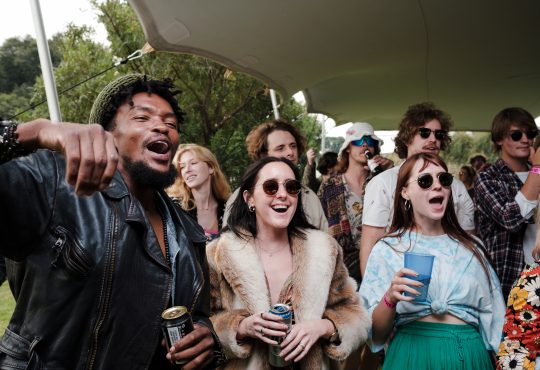Taking the Fujifilm X-T2 to #TheUnsea – Henry Engelbrecht
When it became apparent that FujiFilm SA might give me two X-T2s to use at Oppikoppi #TheUnsea this year I was both nervous and excited. Oppikoppi is the premier music event in South Africa, with way over one hundred acts performing on various stages during the course of three days, and it is absolute heaven for music photographers such as myself. I have been shooting bands for a while now and knew exactly what to expect from my DSLRs, so I wasn’t sure if going mirrorless (using pre-production bodies with beta firmware) for such a big event was a good idea.
Photographing live music is never easy, because you never know what you are going to get and you never have any control over it. The combination of very difficult lighting and fast moving subjects, on different stages with different lighting setups at different times of day, would mean that the X-T2 would really be thrown into the deep end during the festival. Autofocus and high-ISO performance were my biggest concerns.
I literally had no time to get acquainted with the cameras beforehand. I am the proud owner of an X-T1, but the X-T2 is a step up in so many ways and it took me a while to work through the various options on the fly, to set the camera up to be as quick and responsive as what I am used to. But once I customized the camera to my own needs I was able to shoot in pretty much the same manner as what I normally do with my DSLRs. Autofocus on the X-T2 was a revelation, and once I understood what the different AF modes meant I was nailing moving subjects in the dark easily.
ISO settings of between 3200 and 6400 are the norm when it comes to music photography (because you are not allowed to use flash at events like these) and I am surprised at the image quality of the 24.3 MP files. Noise at high ISO settings is not an issue at all, and dynamic range and flexibility in post processing is marvelous. And I am talking about the JPEGs, because I didn’t even have time to consider shooting RAW and how I was going to convert it afterwards.
During the three days other aspects of the X-T2 came to light which enhanced the way I was shooting in the best possible way:
I photographed 90 acts and walked 47 kilometers between the various stages in the three days, and because I was carrying half the weight around compared to what I am used to it was much easier.
- Music photography is usually done in full manual mode, due to the fast-changing lighting conditions, but even under those circumstances the Electronic Viewfinder made the selection of exposure settings easier and I ended up with less than half the files I shot there in previous years.
- The so-called blackout during continuous shooting was not an issue at all. When shooting at 11 fps I could follow the action on stage easily.
The fact that the X-T2’s 325 focus points cover a large portion of the screen made shooting and composition much easier. And the fact that I could view exactly what I was shooting on the articulating LCD screen meant that I could get shots from angles that other photographers couldn’t.
- The way the X-T2 reproduces colours is amazing. And it appears that it actually handles neon light (the bane of any music photographer’s existence, especially those pesky red ones) a little bit better than what my DSLRs did.
So, at the end of the day the question is if I would have gotten better results if I used my DSLRs, and the answer is that I am convinced that I wouldn’t have.
I cheated and took an entire big bag full of DSLR bodies and lenses with me in case the X-T2’s didn’t work out. It stayed in my car the entire long weekend, and I didn’t even consider taking it out once.






Thank you for the write up Henry and for capturing so many of us at Oppi so well. Much love and respect. Hezron
This was a great & very interesting read!
Great photos – you composition and light handling is extraordinary